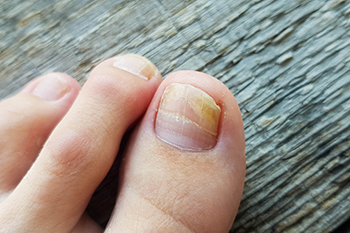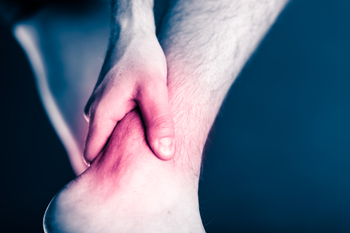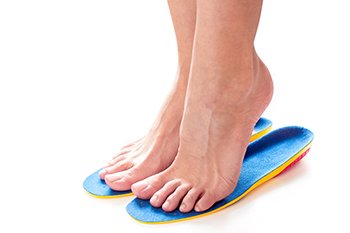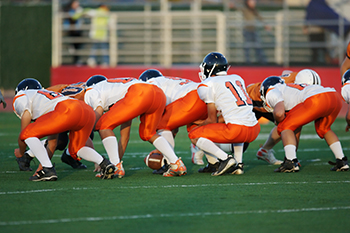Dallas Metro / North Texas
(214) 710-1028
August 2023
Remedies for Toenail Fungus

Onychomycosis, a fungal infection that primarily targets the nails of the toes, arises from diverse fungal sources, which can complicate effective treatment. Fortunately, a number of remedies are available to help combat this issue and restore healthy nails. Toenail fungal infections can lead to symptoms such as thickened, discolored, and deformed nails, causing discomfort and embarrassment. Topical medications, including antifungal nail polish, creams, and ointments, can be applied directly to the affected nail. For more severe infections, prescribed oral medications work from within to eliminate the underlying infection. Although they may require several weeks or even months of treatment, they offer better results for stubborn cases. Laser therapy is a less invasive option, which involves using a laser to target and destroy the fungal cells within the nail. In extreme cases, when the infection is particularly resistant or has caused significant damage, surgical removal of the affected nail may be necessary. This involves extracting the entire nail or a portion of it. If you have a fungal toenail infection that is not responding to common treatments, it is suggested that you consult a podiatrist for additional options.
If left untreated, toenail fungus may spread to other toenails, skin, or even fingernails. If you suspect you have toenail fungus it is important to seek treatment right away. For more information about treatment, contact Kellvan Cheng, DPM of Elite Foot & Ankle. Our doctor can provide the care you need to keep you pain-free and on your feet.
Symptoms
- Warped or oddly shaped nails
- Yellowish nails
- Loose/separated nail
- Buildup of bits and pieces of nail fragments under the nail
- Brittle, broken, thickened nail
Treatment
If self-care strategies and over-the-counter medications does not help your fungus, your podiatrist may give you a prescription drug instead. Even if you find relief from your toenail fungus symptoms, you may experience a repeat infection in the future.
Prevention
In order to prevent getting toenail fungus in the future, you should always make sure to wash your feet with soap and water. After washing, it is important to dry your feet thoroughly especially in between the toes. When trimming your toenails, be sure to trim straight across instead of in a rounded shape. It is crucial not to cover up discolored nails with nail polish because that will prevent your nail from being able to “breathe”.
In some cases, surgical procedure may be needed to remove the toenail fungus. Consult with your podiatrist about the best treatment options for your case of toenail fungus.
If you have any questions, please feel free to contact our office located in Carrollton, TX . We offer the newest diagnostic and treatment technologies for all your foot care needs.
Causes of an Achilles Tendon Rupture

Achilles tendon injuries, particularly ruptures, can be painful and debilitating. This essential tendon, which connects the calf muscles to the heel bone, plays a pivotal role in activities like running, jumping, and pushing off with the foot. Achilles tendon ruptures can be caused by falling from a great height, stumbling into holes, and engaging in sports that demand forceful foot movements, like sprint starts. Even a deep cut over the tendon site can lead to a rupture. Risk factors for an Achilles tendon rupture include age because natural wear and tear over time weaken the tendon. Those with a history of Achilles tendonitis or prior injuries to the tendon are at an elevated risk. Conditions such as obesity, rheumatoid arthritis, and gout can also contribute to Achilles tendon injuries. Inappropriate footwear is yet another factor that can strain the tendon. Engaging in activities with caution, wearing proper footwear, addressing underlying medical conditions, and seeking prompt treatment for previous injuries are important steps in safeguarding the Achilles tendon's health and minimizing the risk of rupture. If you believe you have an Achilles tendon injury, it is suggested that you make an appointment with a podiatrist for a diagnosis and treatment options.
Achilles tendon injuries need immediate attention to avoid future complications. If you have any concerns, contact Kellvan Cheng, DPM of Elite Foot & Ankle. Our doctor can provide the care you need to keep you pain-free and on your feet.
What Is the Achilles Tendon?
The Achilles tendon is a tendon that connects the lower leg muscles and calf to the heel of the foot. It is the strongest tendon in the human body and is essential for making movement possible. Because this tendon is such an integral part of the body, any injuries to it can create immense difficulties and should immediately be presented to a doctor.
What Are the Symptoms of an Achilles Tendon Injury?
There are various types of injuries that can affect the Achilles tendon. The two most common injuries are Achilles tendinitis and ruptures of the tendon.
Achilles Tendinitis Symptoms
- Inflammation
- Dull to severe pain
- Increased blood flow to the tendon
- Thickening of the tendon
Rupture Symptoms
- Extreme pain and swelling in the foot
- Total immobility
Treatment and Prevention
Achilles tendon injuries are diagnosed by a thorough physical evaluation, which can include an MRI. Treatment involves rest, physical therapy, and in some cases, surgery. However, various preventative measures can be taken to avoid these injuries, such as:
- Thorough stretching of the tendon before and after exercise
- Strengthening exercises like calf raises, squats, leg curls, leg extensions, leg raises, lunges, and leg presses
If you have any questions please feel free to contact our office located in Carrollton, TX . We offer the newest diagnostic tools and technology to treat your foot and ankle needs.
Benefits of Wearing Custom Made Orthotics

Custom shoe orthotics offer numerous benefits for people who are seeking enhanced foot comfort and overall well-being. First, they provide personalized support, catering to specific foot anatomy and addressing individual concerns such as arch height, overpronation, or plantar fasciitis. By promoting proper alignment, orthotics can help to alleviate foot and lower body pain, reducing strain on muscles and joints. Additionally, they enhance shock absorption, making daily activities and sports more comfortable with less impact on the feet. Custom orthotics can also improve posture and balance, reducing the risk of injuries related to misalignment. Moreover, they can correct gait issues, making walking and running more efficient and reducing fatigue. Additionally, custom orthotics can prevent and help to correct various foot conditions, making them a valuable investment for those seeking long-term foot health and improved quality of life. If you are seeking more information about custom orthotics, it is suggested that you visit a podiatrist.
If you are having discomfort in your feet and would like to try orthotics, contact Kellvan Cheng, DPM from Elite Foot & Ankle. Our doctor can provide the care you need to keep you pain-free and on your feet.
What Are Orthotics?
Orthotics are inserts you can place into your shoes to help with a variety of foot problems such as flat feet or foot pain. Orthotics provide relief and comfort for minor foot and heel pain but can’t correct serious biomechanical problems in your feet.
Over-the-Counter Inserts
Orthotics come in a wide variety of over-the-counter inserts that are used to treat foot pain, heel pain, and minor problems. For example, arch supports can be inserted into your shoes to help correct overarched or flat feet, while gel insoles are often used because they provide comfort and relief from foot and heel pain by alleviating pressure.
Prescription Orthotics
If over-the-counter inserts don’t work for you or if you have a more severe foot concern, it is possible to have your podiatrist prescribe custom orthotics. These high-quality inserts are designed to treat problems such as abnormal motion, plantar fasciitis, and severe forms of heel pain. They can even be used to help patients suffering from diabetes by treating foot ulcers and painful calluses and are usually molded to your feet individually, which allows them to provide full support and comfort.
If you are experiencing minor to severe foot or heel pain, it’s recommended to speak with your podiatrist about the possibilities of using orthotics. A podiatrist can determine which type of orthotic is right for you and allow you to take the first steps towards being pain-free.
If you have any questions please contact our office located in Carrollton, TX . We offer the newest diagnostic and treatment technologies for all your foot and ankle needs.
Types of Turf Toe Injuries

An injury called turf toe is when the big toe bends beyond its normal range and over-stretches the ligament. Turf toe was first noticed mostly among football players because pushing off the big toe with great force is a frequent movement during the game. Turf toe is also common among dancers and other athletes who frequently jump or push off the big toe with extreme force. The three categories of turf toe injuries include hyperextension, hyperflexion, and dislocation. A hyperextension injury is a stretch or tear of the big toe joint, and it causes swelling, tenderness, and discoloration. A hyperflexion injury is caused when a player is tackled from behind, pushing the knee forward. A dislocation-type injury occurs when the bones in the big toe are dislocated or fractured. People with flat feet may be more prone to turf toe injuries because of increased pressure on the big toe. If the joint of the big toe has become injured, it is suggested that you make an appointment with a podiatrist to determine the cause and receive the appropriate treatment options.
Toe pain can disrupt your daily activities. If you have any concerns, contact Kellvan Cheng, DPM of Elite Foot & Ankle. Our doctor can provide the care you need to keep you pain-free and on your feet.
What Causes Toe Pain?
Most severe toe pain is caused due to a sports injury, trauma from dropping something heavy on the toe, or bumping into something rigid. Other problems can develop over time for various reasons.
Toe pain can be caused by one or more ailments. The most common include:
- Trauma
- Sports injury
- Wearing shoes that are too tight
- Arthritis
- Gout
- Corns and calluses
- Hammertoe
- Bunions
- Blisters
- Ingrown toenails
- Sprains
- Fractures (broken bones)
- Dislocations
When to See a Podiatrist
- Severe pain
- Persistent pain that lasts more than a week
- Signs of infection
- Continued swelling
- Pain that prevents walking
Diagnosis
In many cases the cause of toe pain is obvious, but in others, a podiatrist may want to use more advanced methods to determine the problem. These can range from simple visual inspections and sensation tests to X-rays and MRI scans. Prior medical history, family medical history, and any recent physical traumatic events will all be taken into consideration for a proper diagnosis.
Treatment
Treatments for toe pain and injuries vary and may include shoe inserts, padding, taping, medicines, injections, and in some cases, surgery. If you believe that you have broken a toe, please see a podiatrist as soon as possible.
If you have any questions please feel free to contact our office located in Carrollton, TX . We offer the newest diagnostic tools and technology to treat your foot and ankle needs.
Reminder: When Was the Last Time...?
Definition and Causes of Heel Spurs

Many people think there is a mystery behind what heel spurs are and why they develop. Heel spurs form when our feet endure repeated stress and strain. A heel spur is defined as a small bone that protrudes from the underside of the heel. As we grow, our bones may develop bony growths that can be common around the heels. These growths are referred to as heel spurs and can be uncomfortable. Heel spurs seem to present as a warning sign the body provides to reduce excessive pressure on the heel. Activities such as running, dancing, or even wearing unsupportive shoes can contribute to the development of a heel spur. Certain factors can increase their likelihood, such as being overweight or having abnormal walking patterns. It is beneficial to be proactive in preventing heel spurs. Effective methods can include wearing supportive shoes and practicing proper foot stretching. If you have pain in your heel, it is suggested that you visit a podiatrist who can diagnose and treat heel spurs.
Heel spurs can be incredibly painful and sometimes may make you unable to participate in physical activities. To get medical care for your heel spurs, contact Kellvan Cheng, DPM from Elite Foot & Ankle. Our doctor will do everything possible to treat your condition.
Heels Spurs
Heel spurs are formed by calcium deposits on the back of the foot where the heel is. This can also be caused by small fragments of bone breaking off one section of the foot, attaching onto the back of the foot. Heel spurs can also be bone growth on the back of the foot and may grow in the direction of the arch of the foot.
Older individuals usually suffer from heel spurs and pain sometimes intensifies with age. One of the main condition's spurs are related to is plantar fasciitis.
Pain
The pain associated with spurs is often because of weight placed on the feet. When someone is walking, their entire weight is concentrated on the feet. Bone spurs then have the tendency to affect other bones and tissues around the foot. As the pain continues, the feet will become tender and sensitive over time.
Treatments
There are many ways to treat heel spurs. If one is suffering from heel spurs in conjunction with pain, there are several methods for healing. Medication, surgery, and herbal care are some options.
If you have any questions feel free to contact our office located in Carrollton, TX . We offer the latest in diagnostic and treatment technology to meet your needs.
Blog Archives
- April 2024
- March 2024
- February 2024
- January 2024
- December 2023
- November 2023
- October 2023
- September 2023
- August 2023
- July 2023
- June 2023
- May 2023
- April 2023
- March 2023
- February 2023
- January 2023
- December 2022
- November 2022
- October 2022
- September 2022
- August 2022
- July 2022
- June 2022
- May 2022
- April 2022
- March 2022
- February 2022
- January 2022
- December 2021
- November 2021
- October 2021
- September 2021
- August 2021
- July 2021
- June 2021
- May 2021
- April 2021
- March 2021
- April 2020
- March 2020
- February 2020
- January 2020
- December 2019
- November 2019
- October 2019
- September 2019
- August 2019
- July 2019
- June 2019
- May 2019
- April 2019
- March 2019
- February 2019
- January 2019
- December 2018
- November 2018
- October 2018
- September 2018
- August 2018
- July 2018
- June 2018
- May 2018
- April 2018
- March 2018
- February 2018
- January 2018
- December 2017
- November 2017
- October 2017







